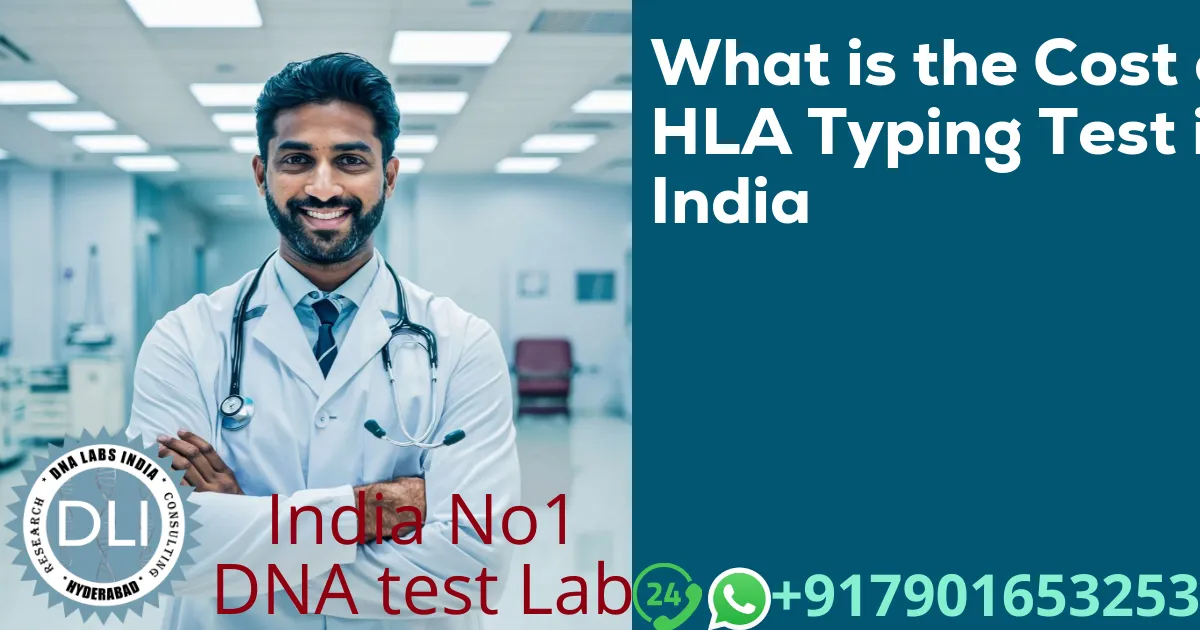Human Leukocyte Antigen (HLA) typing is a vital test used to match patients with compatible donors for organ, bone marrow, or stem cell transplants. At DNA Labs India, we offer accurate and reliable HLA Typing tests using advanced molecular techniques to ensure the best outcomes for transplant procedures.
In India, the cost of an HLA Typing Test typically starts at ₹8,000, depending on the resolution required and the purpose of testing.
What is HLA Typing?
HLA typing is a laboratory test that identifies specific proteins on white blood cells. These proteins, called human leukocyte antigens, play a critical role in helping the immune system recognize which cells belong to your body and which do not.
At DNA Labs India, we perform HLA typing using high-precision molecular methods to support:
- Bone marrow and stem cell transplants
- Organ transplants
- Disease association studies
- Autoimmune disorder assessments
Why is HLA Typing Important?
A successful transplant depends on how closely the donor’s and recipient’s HLA markers match. A better match:
- Increases transplant success rates
- Reduces chances of organ rejection
- Minimizes immune complications such as Graft-versus-Host Disease (GVHD)
Who is Likely to Be an HLA Match?
The best chance of finding an HLA match is usually within your family:
- Siblings have a 25% chance of being a perfect HLA match.
- Parents and children are always a 50% match (haploidentical).
- If no family member is a match, DNA Labs India can assist in searching for unrelated donors via registries.
How is the HLA Typing Test Performed?
We collect a simple blood sample or cheek swab. Testing is done using:
- Polymerase Chain Reaction (PCR)
- Sequence-Based Typing (SBT)
- High-resolution DNA sequencing (Next-Generation Sequencing)
Our high-throughput HLA typing ensures fast and accurate results that meet international transplant standards.
HLA Typing Test Cost at DNA Labs India (As of August 2024)
| Test Type | Price (INR) |
|---|---|
| Low-Resolution HLA Typing | ₹5,250 |
| Intermediate-Resolution Typing | ₹8,000 |
| High-Resolution HLA Typing | ₹15,795 |
Advanced HLA Typing at DNA Labs India
We utilize advanced Single Molecule Real-Time (SMRT) sequencing technology for high-resolution HLA typing. Benefits include:
- Better donor-recipient compatibility
- Reduced ambiguity in test results
- Higher transplant success rates
Home Sample Collection Available
DNA Labs India offers pan-India home sample collection, ensuring convenience and safety. Once collected, your sample is tested in our certified labs, and results are delivered digitally within a few days.
FAQs about HLA Typing Test
1. What is the cost of high-resolution HLA typing?
At DNA Labs India, high-resolution HLA typing typically costs ₹15,795.
2. Is the test available across India?
Yes, we offer nationwide coverage, including home sample collection.
3. How long do the results take?
- Low-resolution: 3–5 working days
- High-resolution: 5–10 working days
4. Can this test be used for unrelated donor matching?
Absolutely. We support family and unrelated donor searches, including registry-based matching.
5. Is this test covered by insurance?
Some private insurance providers may cover this test under specific transplant-related policies. Please check with your insurer.
Why Choose DNA Labs India?
✅ High-Resolution Molecular Testing
✅ Expert Genetic Counselors
✅ Home Sample Collection Available
✅ Pan-India Service Coverage
✅ Fast, Confidential Digital Reports



